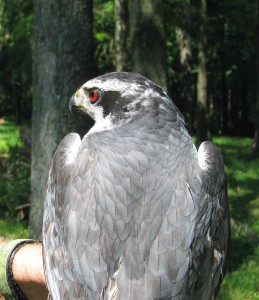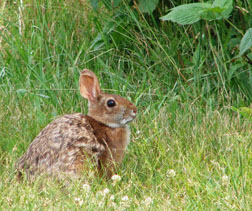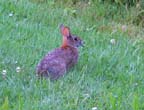 Here’s some good news for a Monday morning.
Here’s some good news for a Monday morning.
– Wildlife biologists with the Maryland Department of Natural Resources (DNR) have discovered Northern Goshawks successfully breeding in the State for the first time since 2006. Read the Maryland Department of Natural Resources press release, here.
– A second wild American burying beetle population now calls Nantucket, Massachusetts home, thanks to a successful captive breeding and reintroduction program, which began in 1996 at the Roger Williams Park Zoo in Providence, Rhode Island. Read this Endangered Species Act Success Story on the US Fish and Wildlife Service website, here. Lots of photos.
Photo: Can I tell you how lucky you are that I went with the goshawk and not the burying beetle grubs? Courtesy of the Maryland Dept. of Natural Resources.

 Last autumn, nine New England cottontails bred in captivity at the Roger Williams Park Zoo in Rhode Island were released inside a predator-proof fence enclosing one acre of the Ninigret National Wildlife Refuge, also in Rhode Island.
Last autumn, nine New England cottontails bred in captivity at the Roger Williams Park Zoo in Rhode Island were released inside a predator-proof fence enclosing one acre of the Ninigret National Wildlife Refuge, also in Rhode Island.
